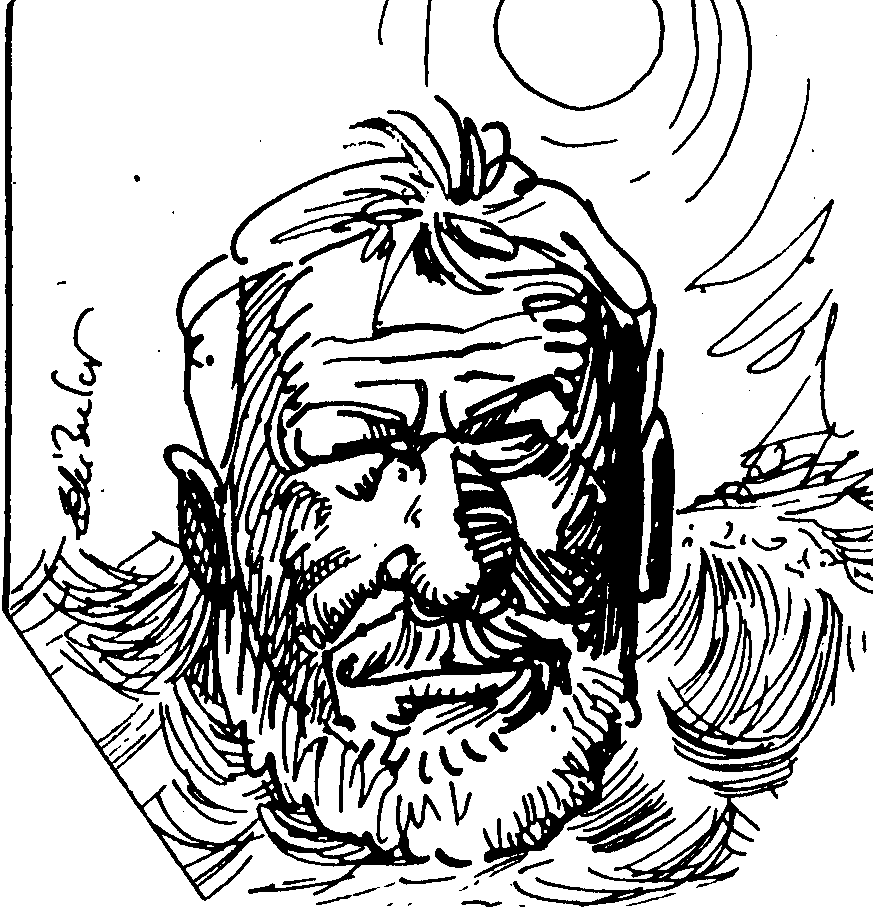About the ancient city of Teos
(speaking somewhat apocryphally...)
Ionian Greeks migrated to the shores of Asia minor at the end of the first millennium BC. And sometime around 800 BC, the twelve (later thirteen) major cities of Ionia formed themselves into a Panionic League -- along what is now the Turkish Aegean coastline. The League spread itself from Phocaea in the north down the winding shoreline to Miletus in the south -- and in the process it covered and controlled a stretch of coastal territory more than 300 miles in length. The League became known as the Ionian Empire.
And among its powerful city-states was Teos.
Ionia flourished in antiquity due mostly to its abundant agriculture and bold commerce. During her heyday, she made important contributions to Greek art, literature, and philosophy. And it's likely that Homer was an Ionian and that he wrote The Iliad and The Odyssey while residing in the Ionian region -- most probably, in Teos and Smyrna. [And if you're not convinced that there was a single author of those classical works..? Well, ya' got me stymied, I guess...]
The historical writings of Herodotus (c.484-c.425 BC) and Thucydides (c.460-c.400 BC) are filled with the exploits of the brave Ionians -- and among them, the Teians. At one point, there was even a proposal that Teos be made the "Capital City" of the thriving Empire -- though the proposal was turned down when bickering among the other contenders threatened a serious internal conflict.
In the 7th and 6th centuries BC the Ionians were conquered by the Lydians (who are credited with inventing coin-making in the western world -- and whose most notorious ruler was King "Rich as" Croesus). But as it turned out, the Ionian influence on Lydian culture surpassed that of the Lydian on the Ionian! And she shrugged off the Lydian yoke and continued to prosper...
Teos, along with rest of the League, suffered historic defeats at the hands of the Persians in 546 BC and again in 494 BC. But despite an even more historic victory by Greek-allied forces over the Persians at Salamis in 480, Teos remained under some Persian influence until fully liberated by Alexander the Great in 334 BC. Subsequently, Ionia was incorporated into the Roman and Byzantine empires. And it continued to flourish until the invading Turks arrived on the scene in the 15th Century AD!
Apart from the central role it played as a key city-state within the Ionian Empire, Teos is famous for at least three other things. First, it's where Apellicon made his home. What? You don't remember Apellicon of Teos? We-ll, he was the guy that bought Aristotle's library at public auction when all of the great ploymath's descendants petered out. Seems that by the time it got to him, the library was in pretty horrible shape -- but that didn't stop him from making a pile of money from the sale of pitifully inaccurate copies of those magnificent biblio-treasures.
Second, it's home to one of the finest surviving ruined Temples to Dionysus [the Roman Bacchus]. Dionysus was the main deity of Teos and, as such, inspired the town folk to uncommon bouts of revelry -- when they weren't out beating the crap out of enemy states. It's said of the
Dionysus-inspired Teians that they "...possessed greater artistic and literary ability than either the Aeolians or the Dorians [the other two Greek ethnic divisions], but they were also less vigorous and hardy and exhibited tendencies toward sensuality." So they weren't all that baaad, now were they...?
Third, it's the home of the world's first recorded artist's colony -- the 'Artists of Dionysus', originally established during the 5th Century BC. The 'Artists' were an extremely talented bunch -- that provided dramatic and musical productions for venues all over the Greek World of that time. It was also an arrogant and troublesome bunch -- so bad, in fact, that the good citizens of Teos kicked them out and sent them packing to Ephesus, where they acted up again... and got kicked out again! (They finally settled for good in closeby Lebedus -- very near to where this website now emanates) .
Thomas Drach's muse, Anacreon (c. 570-485 BC), who is known as the last great Greek poet, was perhaps the 'Artists' most popular and famous member -- and his name remains associated with Teos, his birthplace. Anacreon (or as Tom spells it, Anakreon -- with a 'k' in the Greek fashion) was a voluptuary and a hedonist, who lived his fulsome life in glorification of the arts and of love. He died at the age of 85 when "he choked on a grape pit" -- which is a polite way of saying he had too much wine at the party, and on the way home, fell off a parapet into a drainage ditch, and drowned...
And BTW, Herodotus (you remember...the historian) once proclaimed that ancient Ionia had the best climate in the world -- at least the world as it was known in his time. Why -- even today it still has a legitimate claim to compete for that honor. And since old Teos (modern SIgacIk) sits almost equidistant between the northern and southern extremities of old Ionia (along the Aegean coast of Modern Turkey), it can fairly boast to have the best of the best. You don't believe us...? Then come visit and see for yourself.
JM, May '97
|
 Poet's Corner
Poet's Corner






